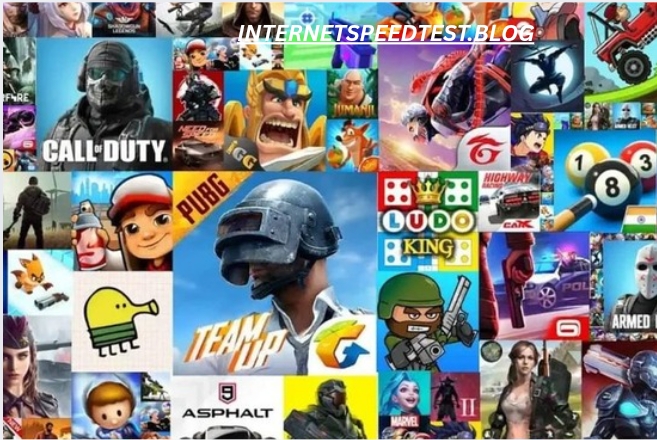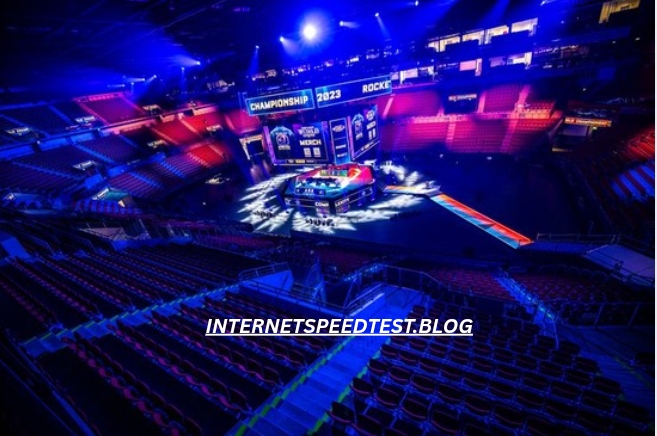Introduction
War‑table games—also known as tabletop war games or miniature war wartable games—blend strategic thinking, tactical skill, and competitive play into a rich gaming experience. These tabletop adventures transport players from the comfort of their dining table or gaming club into historical battlefields, fantasy realms, or sci‑fi galaxies—using miniatures, maps, and rulebooks. Whether reenacting ancient battles, commanding futuristic armies, or simply outmaneuvering friends, war‑table games offer a unique combination of storytelling, strategy, and social interaction.
In this article, we’ll explore the origins of war‑table games, their key mechanics, popular titles, community culture, and why they continue to thrive in the digital era.
What Are wartable games
At their core, war‑table games are tabletop experiences focused on military conflict simulation. Players assemble armies—often meticulously painted miniature figures—over grids or modular hex/tile based battlefields. Turns involve maneuvering units, attacking opponents, managing resources, and achieving mission objectives. wartable games can simulate:
- Historical warfare (e.g., Napoleonic battles, World War II, ancient Rome)
- Fantasy conflicts (elves vs. orcs, undead armies, hero units)
- Science‑fiction engagements (starships, aliens, space marines)
Unlike board games with fixed boards and mechanics, war‑table games often provide more freedom via modular terrain, customizable army lists, and flexible rules that support emergent storytelling and tactics.
A Brief History of wartable games
Origins in the 19th and Early 20th Century
War gaming has early roots in Prussian military training in the early 19th century. One notable early example was “Kriegsspiel,” a detailed simulation devised to teach officer tactics using map grids and dice.
Emergence of Hobby Miniatures
By the mid‑20th century, hobbyists began playing war simulations with toy soldiers in basements. Games like “Chainmail” (1971) by Gary Gygax and Jeff Perren, which used medieval miniatures and rules, were seminal—paving the way for fantasy and complex combat systems.
Rise of Fantasy & Sci‑Fi
Rulesets such as “Dungeons & Dragons” (mid‑1970s) popularized fantasy gaming. Soon, specialized miniatures and battle systems emerged: “Warhammer Fantasy Battle” (1983), “Warhammer 40,000” (1987), and others created massive wargaming communities around painting, collecting, and tactics.
Modern Tabletop Renaissance
Today’s war‑table gaming scene includes mass-market systems (e.g., Warmachine, Infinity), indie designs, historical sims, digital companion apps, and global tournaments. Paints, terrain, 3‑D printing, and online social media have elevated the hobby to unprecedented creative heights.
Core Mechanics & Gameplay Elements
1. Army Building
Players construct forces from a point‑based system. Each unit—infantry, cavalry, heroes, vehicles—costs points. You design your army to a set total, balancing between defensive, support, long‑range, and close‑combat units.
2. Initiative and Turn Phases
Games typically use turn‑based play. Some feature alternate activations, where players take turns activating a single unit, creating dynamic back‑and‑forth tension.
3. Movement
Miniatures move over terrain using measuring tools (rulers or templates). Terrain—hills, woods, buildings—impacts movement, line of sight, and cover.
4. Combat
Combat usually involves dice rolls—often d6s or custom dice—to determine hits, wounds, saves. Modifiers depend on range, cover, unit stats, and special abilities.
5. Morale & Psychology
Units may break or flee when casualties mount or morale checks fail—adding realism and dramatic moments on the table.
6. Objectives & Missions
Win conditions may vary: capture flags, hold zones, destroy enemy, or complete narrative quests.
7. Terrain & Environment
Modular terrain not only looks great but provides strategic opportunities. Controlling high ground, chokepoints, or dense cover can swing battles.
Popular wartable games You Should Know
Here’s a rundown of widely played titles across history, fantasy, and sci‑fi:
1. Rules‑Heavy Historical Simulations
- “Flames of War”: World War II in 15 mm scale. Units are squads and tanks, using a combined arms system.
- “Bolt Action”: WWII skirmish game in 28 mm scale—emphasizes infantry firefights, combined with tanks and artillery.
- “Field of Glory”: Ancient warfare recreated in tabletop form, featuring Rome, Greece, Carthage, Celts, and more.
2. Fantasy Behemoths
- “Warhammer Age of Sigmar”: The latest fantasy iteration from Games Workshop—high-impact models, endless factions, easy entry for new players.
- “Kings of War” (Mantic Games): Streamlined army gameplay with large units and mass battles.
3. Sci‑Fi & Steampunk
- “Warhammer 40,000”: Iconic grimdark sci‑fi game pitting Space Marines, Orks, Eldar, and Tyranids in large‑scale battles.
- “Infinity” (Corvus Belli): Fast‑paced skirmish game with sci‑fi miniatures, emphasis on cover and reactive gameplay.
- “Warmachine & Hordes” (Privateer Press): Steam‑powered warcasters vs monstrous hordes, with rich lore and competitive play.
4. Skirmish & Narrative Focus
- “Malifaux”: Gothic-punk fantasy game centered on small crews, narrative missions, and Fate‑based mechanics.
- “Frostgrave”: Wizards delve into frozen ruins for treasure in small‑scale skirmishes filled with narrative events.
5. Indie & Thematic
- “SAGA”: Focused on Dark Ages and Viking warfare in a skirmish format.
- “Team Yankee”: Cold‑War‑era modern combat in 15 mm scale.
: Why wartable games Remain Popular
1. Tangible & Creative Outlet
Unlike digital gaming, war‑table games engage through tactile painting, modeling, and terrain‑crafting—appealing to artistic and hands‑on players.
2. Deep Strategy & Tactical Depth
Players must think beyond dice—controlling terrain, bluffing through activation, reacting to opponents with finesse.
3. Social Community
Many war‑table games are played in clubs, tournaments, and conventions—fostering camaraderie, mentorship, and friendly rivalries.
4. Collectibility & Customization
Collecting units, painting them in custom colors, and personalizing your army creates lasting attachment and creative satisfaction.
5. Narrative & Storytelling
Many systems include story‑driven campaigns or themed scenarios that evolve as players play—bringing narratives to life on the table.
Getting Started with War‑Table Games
Step 1: Pick a System
Choose between historical, fantasy, sci‑fi, or narrative skirmish. Consider: scale (15 mm vs 28 mm), rules complexity, community presence, model availability.
Step 2: Start Small
For skirmish games (e.g., Infinity, Frostgrave), begin with starter boxes or small forces. Learn core rules with just a few units before expanding.
Step 3: Gather Supplies
Essential gear includes:
- Rulebook
- Miniature starter set
- Measuring tools, dice
- Brushes, paints
- Hobby glue, brushes, primer
- Terrain kits or materials to build creative tabletop encounters
Step 4: Learn by Playing
Engage with friends, local gaming stores, or online communities. Many offer beginners’ nights or starter tutorials. Ask seasoned players for tips—it’s invaluable.
Step 5: Practice Painting & Modeling
Even a tabletop‑nice finish adds immersion. You don’t need pro skills—dry‑brushing, washes, and basic techniques go a long way. Tutorials abound on YouTube.
Step 6: Explore Campaigns & Story Arcs
Many game lines offer narrative campaigns you can run over several matches. They give structure, goals, and level‑up progression to your army.
Advanced Strategies & Tactics
For competitive players or those wanting depth:
1. List Composition & Synergy
Think about the roles needed: heavy hitters, support buffers, screening infantry. Balance shooting, melee, defense.
2. Command & Control
Prioritize key activating units (generals, hero units) to swing momentum. Save strong powers or abilities for critical moments.
3. Terrain Mastery
Control choke points, funnel enemy movement, deny lines of sight, and set up flanking attacks.
4. Interactions & Counters
Know meta‑threats and bring counters: anti‑air to tackle flyer spam, anti‑tank to beat armor columns.
5. Adaptation & Flexibility
Respond to battlefield changes—if your opponent splits forces, capitalize. If you’re winning one flank, reinforce it.
Community & Competitive Play
War‑table gaming has vibrant communities worldwide:
Local Clubs & Game Stores
Weekly nights, demo events, painting clubs—great for new players. Ask about leagues or casual meetups.
Tournaments & Events
Large-scale events like “Las Vegas Open,” “Warhammer Festival,” or “Forge World’s Warmaster Invitational” gather regional players in competitive tournaments.
Online Communities
Reddit (e.g., r/warhammer, r/minipainting) and Discord servers offer rule discussions, painting tutorials, battlereports, and advice:
“I love how a well-timed charge from flank can decide a game…”
Redditors share stories, unit lists, and tips to improve tactics and painting techniques.
Digital Integration & Hybrid Play
Though tabletop is traditional, the digital world increasingly complements it:
Virtual Tabletops (VTTs)
Ruleset conversion for virtual play via platforms like Tabletop Simulator or Roll20—letting remote games with digital miniatures.
Companion Apps
Apps for army builders, stat trackers, match timers, and line‑of‑sight tools are now common (e.g., BattleScribe, War Room).
Augmented Reality & Terrain‑mapping
Augmented reality overlays battlefield data, and 3D terrain scanning helps visualize setups before physical layout.
Digital Adaptations
Some tabletop systems have board‑game or video game versions, such as “Warhammer: Vermintide” or “Battlefleet Gothic,” which bring the experience to screens.
Painting & Terrain: The Creative Heart
The hobby thrives on visual creativity:
Miniature Painting Techniques
- Basecoat → Wash → Dry‑brush
- Edge‑highlighting
- Weathering effects (mud, rust, scorch marks)
- Freehand symbols for unit identity
Training wheels like Citadel Contrast paints (Games Workshop) make shading easier, but multi-layered techniques reward patience.
Terrain Building
Battlefields are more than pretty sets—they’re tools:
- Foam boards for hills
- Cork bark for ruined walls
- Static grass, flock, tufts
- 3D‑printed building kits
- Recycled materials turned into villages, forests, and bunkers
A well‑crafted terrain board can elevate immersion and tactical options.
wartable games as Life Skills
Playing these games offers benefits beyond hobby‑fun:
Strategic Thinking & Planning
You must think ahead, predict enemy options, and devise contingencies.
Art & Craftsmanship
Fine‑motor painting, color theory, and creativity all factor into the hobby, making it accessible for artists.
Social & Team Skills
Players interact, negotiate, teach, and learn sportsmanship. Many tournaments emphasize etiquette, fun, and camaraderie.
Research & Learning
Historical games encourage research into period uniforms, battle tactics, and army organization—turning gamers into amateur historians.
Tips for Sustained Enjoyment
For both beginners and veterans, here are ways to stay engaged:
- Set clear goals—whether to paint a safe handful of figures or win a tournament, knowing your objective guides progress.
- Batch hobby tasks—paint 5‑10 miniatures per session, build terrain one weekend. Small progress is still progress.
- Join online groups—Discord, Reddit, or Facebook galleries provide accountability and inspiration.
- Share your work—post photos, battle reports, even short write‑ups. Community feedback helps you grow.
- Attend events—demo nights build confidence; tournaments sharpen skill.
- Try different systems—if you get burned out, switch scale or setting for renewed excitement.
Challenges & Considerations
Like any hobby, war‑table games come with potential pitfalls:
- Cost: Miniatures, paints, terrain, and supplements add up—but thrift shops, steals, and scale choices (15 mm vs 28 mm) can ease the burden.
- Time investment: Painting and prepping models takes hours. Some find it meditative; others might prefer board games if time‑constrained.
- Rules churn: Many systems evolve quickly, issuing errata or new editions; staying current can feel overwhelming.
- Toxic competitiveness: In rare cases, overly serious tournament culture can dampen fun. Choose friendly communities or casual play to stay joyful.
The Future of War‑Table Games
What lies ahead in this vibrant hobby?
- More digital integration—AI‑powered campaign managers, dynamic terrain generation, and cloud‑based squad tracking.
- Indie design boom—small studios and Kickstarter keep bringing fresh, experimental rules and settings.
- Eco‑friendly materials—recycled plastics, 3D‑printed eco-filaments, and non‑toxic paints are becoming mainstream.
- Narrative & legacy gaming—campaign arcs where units level up, stories evolve, and every battle matters long term.
Even in an era of VR and video wartable games, the physicality and creativity of the tabletop ensure war‑table games endure for generations.
Conclusion
With roots in military training and blossoming into a global hobby, war‑table games offer a compelling mix of strategy, creativity, and community. Whether you’re drawn to historical realism, fantasy drama, or sci‑fi spectacle, there’s room on the tabletop for your armies and stories. From painting a single figure to commanding an entire battalion in competitive play, war‑table gaming encourages craftsmanship, critical thinking, and camaraderie.
Get hands‑on—choose a system, gather your paints, and claim your battlefield. The fusion of art, tactics, and shared experience awaits. Welcome to the




